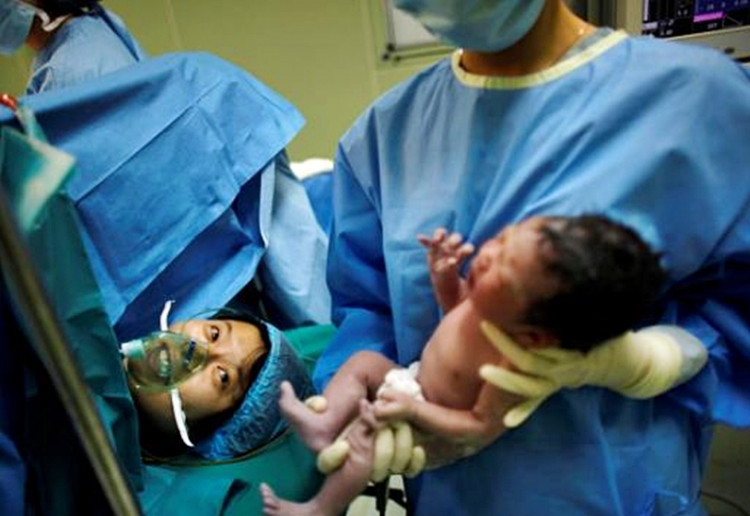The way a person is born -- either by natural vaginal delivery or by Cesarean section or C-section -- might have acute effects on his neurodevelopment. It could also lead to long-lasting changes in the human brain and a person's behavior.
A new study from Georgia State University revealed that Caesarean-born mice exhibited altered patterns of cell death across the brain. These mice also suffered from greater nerve cell death compared to vaginally delivered mice in at least one brain area.
The Georgia State team of neuroscientists examined the effect of vaginal delivery versus Caesarean section on neuronal cell death. The development of neuronal cells is an important process that reshapes neural circuits early in a baby's development. This process occurs in humans and mice.
Cesarean births have become a common practice around the world. In the United States, C-sections comprise some 30 percent of births annually. Many of these procedures are elective.
In the past, Caesarean births have been linked to behavioral effects in babies. This disquieting result suggests effects on the brain. Human studies, however, are baffled by medical complications, altered birth timing and maternal factors that often accompany Caesarean delivery.
A carefully controlled study in mice addressed these limitations by examining the brains of offspring before and after a vaginal or Caesarean birth up to weaning age. The study was undertaken by Dr. Alexandra Castillo-Ruiz, Dr. Nancy Forger and students at Georgia State's Neuroscience Institute.
They discovered that mice delivered vaginally showed a decrease in cell death across the brain within hours of birth. This result, however, did not occur in Caesarean-born offspring.
The most dramatic difference was seen in a region of the hypothalamus regulating the stress response and brain-immune interactions. The greater cell death in Caesarean-delivered newborns was associated with a reduction in the number of neurons in at least one brain area. It was also associated with altered behavior in a maternal separation test.
The study shows that birth mode did not affect general measures of development such as total brain size or day of eye-opening in juvenile mice. The study authors did observe increased weight gain in Caesarean-born mice at weaning age, which is consistent with clinical reports of higher body mass index in humans born by C-section.
The study was published in the journal, "Proceedings of the National Academy of Sciences," the official scientific journal of the National Academy of Sciences based in Washington D.C.






